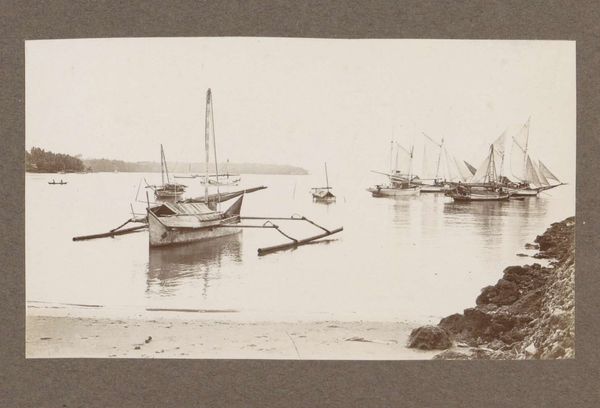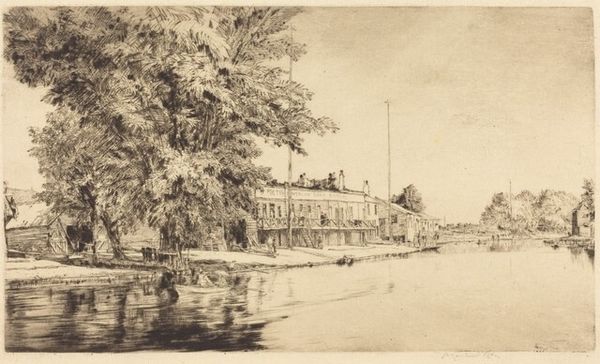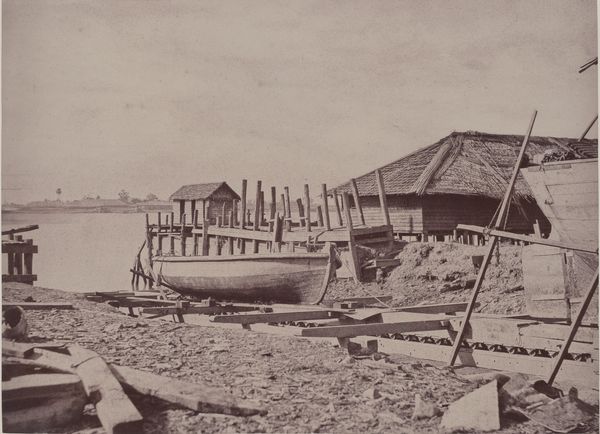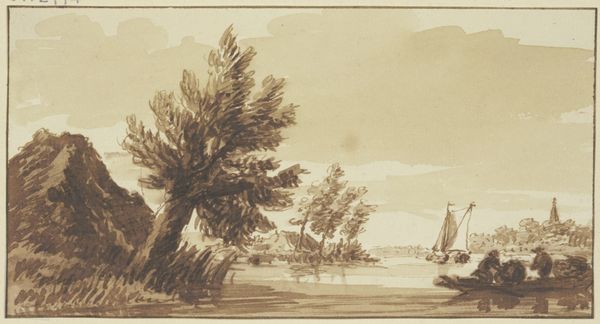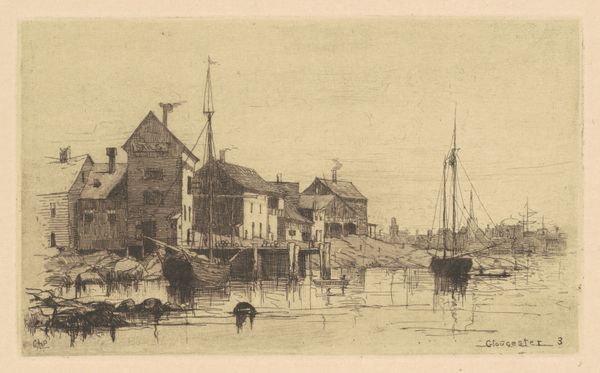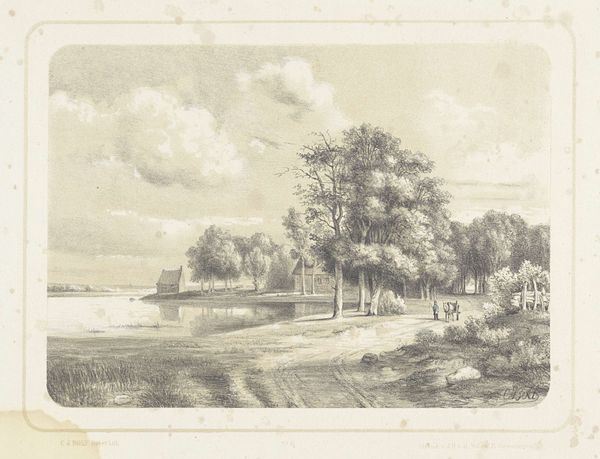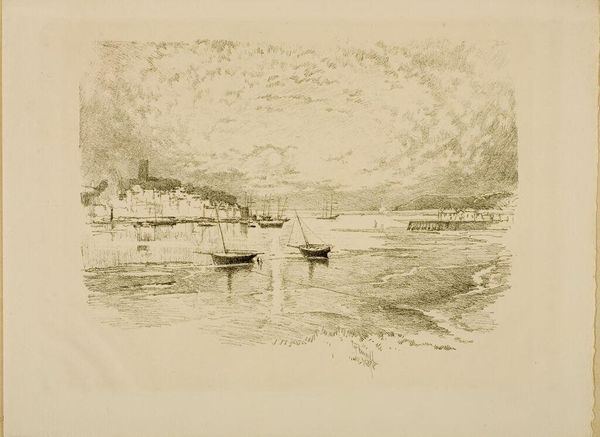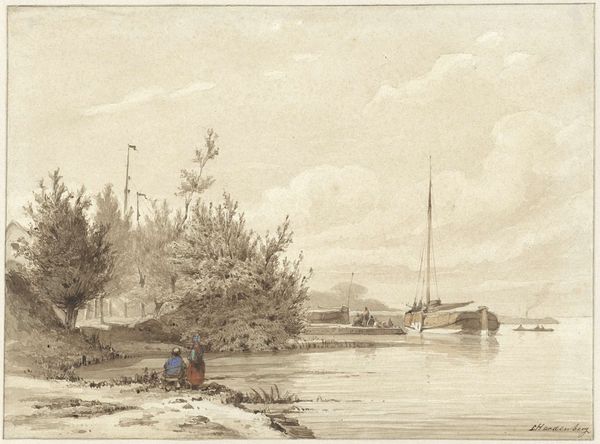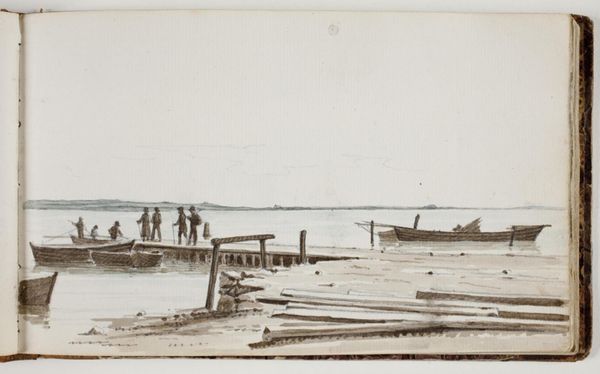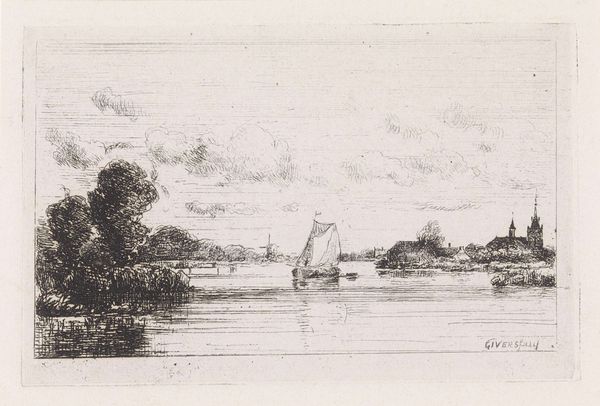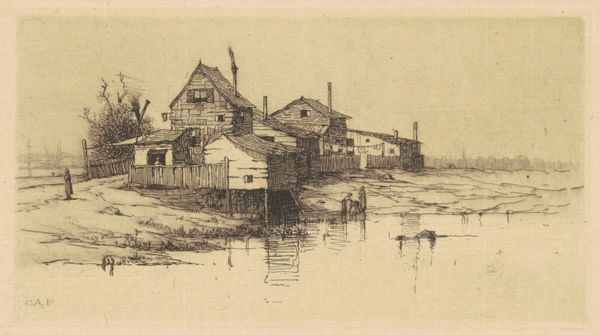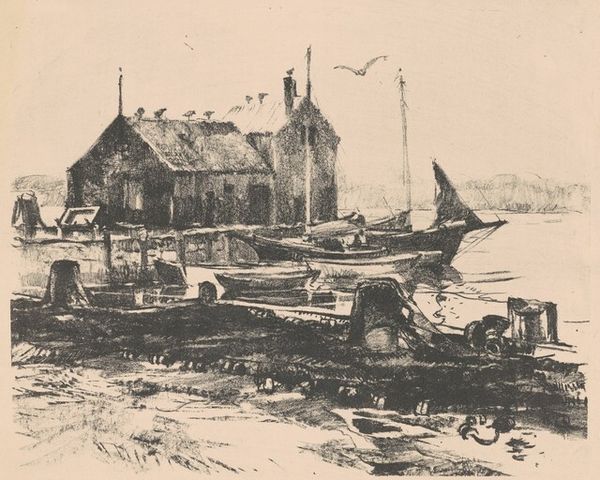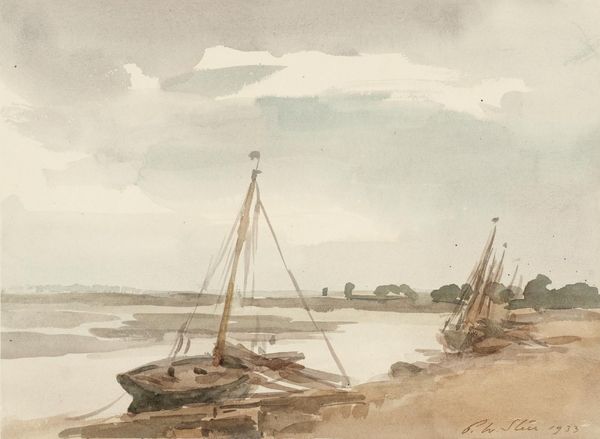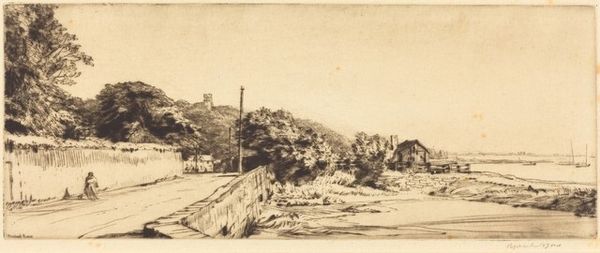
painting, canvas
#
painting
#
landscape
#
canvas
#
romanticism
#
monochrome
#
skyscape
#
monochrome
Dimensions: 95 cm (height) x 132.5 cm (width) (Netto)
Art Historian: Editor: Editor: We're looking at "Kystparti ved Tårbæk. Eftermiddag," a landscape painting on canvas by Heinrich Buntzen, created in 1835. What immediately strikes me is how the artist uses different tones to create a sense of depth, from the buildings to the boats on the shore, out to the water and beyond. How do you read this piece, focusing on Buntzen’s approach to form? Art Historian: Observe how Buntzen constructs a scene with a tripartite division. Notice the deliberate compositional strategy – how the lines of the buildings direct our vision towards the shore, ultimately resolved in the clouds and horizon? Editor: Yes, the way the building aligns to that perspective draws me into the painting, yet is broken up again by the boats! So, how would you interpret those shapes playing off each other formally? Art Historian: Buntzen is consciously employing compositional tactics – note how the verticality of the mast disrupts the otherwise strong horizontality, and note how they are balanced by that far boat to suggest depth, shape and form. The boats reiterate the horizontality but offer the diagonal. And that sense of calm pervades. Are you following me so far? Editor: I am, yes. The formal language of composition dictates my understanding but does not suggest any underlying concepts. It's also fascinating how much texture he achieves using seemingly simple strokes, giving the houses and boats a very palpable presence. Art Historian: Precisely. The surface's materiality isn't merely representational; it’s fundamental to the work's being. He almost constructs these shapes to communicate a sense of volume and realism! Editor: I now see the attention he is putting in this composition to shape a feeling using tonal range. The balance feels meticulous but calm, and each building and boat are like individual shapes communicating that form of volume you noted. I wouldn't have noticed without your breakdown. Thank you. Art Historian: It’s in such close analysis where the real understanding lies.
Comments
No comments
Be the first to comment and join the conversation on the ultimate creative platform.

